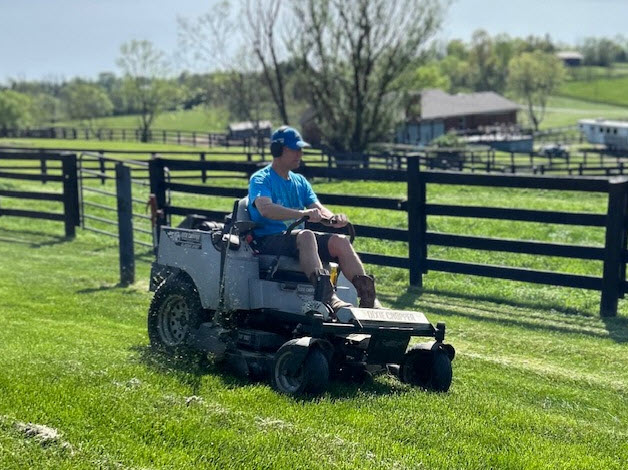After building a solid rapport with your customer over the phone (see the Building a Relationship Over the Phone? blog if you missed it), it is essential to delve into the matter at hand and offer assistance in tackling their financial hurdles. Understanding the customer’s current situation is paramount. Once you have gained clarity on their circumstances, the next step is to Match their needs with the array of resources and programs at your disposal, designed to aid customers with their accounts. Finally, it is about Processing the agreement or ensuring that all promised services will be delivered upon their fulfillment of commitments. After you meet my doctor, allow me to demonstrate some effective approaches that have proven successful in this regard.

The Doctor’s Appointment
So, you have been dealing with this persistent cough, and your kids are practically dragging you to the doctor’s office. You are a regular there, so you know the drill. After the usual waiting game, the doctor finally strolls in, does a quick scan of your file, and asks what has been bothering you.
You explain about the cough, mentioning you have already tried some basic over-the-counter stuff. The doctor nods, takes a look, asks a few questions, and concludes that it is just one of those things going around. Without much ado, they hand you a prescription and send you on your way.
You head to the pharmacy, hopeful for some relief, only to find out that the prescription is basically the same cream they gave you for that rash months ago. Poison ivy cream for a cough? Seems like your doc might have just been recycling old scripts. Effective? Well, let us just say your cough might be more puzzled than cured.
If your doctor can mess up a prescription, so can a collector mess up a solution for a customer struggling to resolve their financial situation.

Understanding the Customer’s Situation
The primary aim of every collection call is to assist customers in resolving their financial situations. Recognizing that each customer is unique, collectors must leverage all available communication tools to encourage active participation and inquire deeply to grasp the nuances of the customer’s circumstances. This artistry distinguishes a great collector. I firmly believe that when customers engage with an adept collector, they are rewarded with assistance and the reassurance of having an advocate committed to helping them find a resolution.
Despite this, many collectors I encounter hesitate to ask probing questions, particularly in challenging situations. However, I hold the conviction that with a cultivated relationship, customers are more inclined to respond candidly. Admittedly, there will always be customers who resist participation, opting to argue or terminate the call prematurely. It is a common misconception among customers that they can evade their financial realities, only to find them miraculously resolved one day. As collectors, it is imperative to maintain composure in such instances and swiftly transition focus to the next customer. Resilient collectors persevere through adversity, ever ready to assist the next individual. Remember the Astronaut Theory.
Understanding the customer’s financial situation necessitates gathering specific information:
- First, comprehending the cause of the customer’s delinquency is essential. While historical reasons may be pertinent, focusing on recent developments, particularly since January 2024, proves most relevant.
- Second, determining the customer’s current financial capacity is crucial. Instead of dictating payment amounts, it is about eliciting what the customer can realistically afford. Exploring how they allocate funds currently can provide insights into potential solutions.
- Third, discerning the customer’s short-term plans (within the next 30-90 days) regarding the account is vital. Through open-ended questions, the collector can challenge the customer to articulate their strategy.
The purpose behind understanding of the recent past, present, and foreseeable future aids in categorizing customers as willing and able to pay, willing but unable to pay, or outright refusals. A professional collector can navigate each scenario effectively. Additionally, identifying whether an unable-to-pay customer’s issue is short-term (less than 90 days) or long-term (greater than 90 days) further drives the collection strategy.

Identifying the Right Solution
Once the customer has engaged, shared their story, and outlined their capabilities, it is up to the collector to match the best solution or solutions. Let us consider our customers:
- Willing and Able to Pay Today: This scenario is often the simplest to resolve, but one crucial detail needs clarification. Even if a customer can pay in full today, can they maintain this in the near future? A professional collector must gauge the customer’s future capability to ensure the resolution is sustainable. Always confirming future payment intentions is key.
- Willing but Unable to Pay Today (Short Term): These customers require assistance to return to a paying status, often due to unexpected expenses or short-term hardships. Collectors must be familiar with available financial assistance tools, such as Skip a Pay or Cure Programs, and allocate funds wisely to benefit both the customer and the company.
- Willing but Unable to Pay (Long Term): These customers may require significant intervention due to major life challenges like job loss or medical issues. Understanding the customer’s current and future situation is crucial. Solutions may involve refinancing, settlements, verifying insurance coverage, or utilizing hardship programs tailored for long-term situations.
- Refusal to Pay: While challenging, proper diagnosis of a customer’s refusal to pay can mitigate future conflicts. Collectors must differentiate between permanent refusal and temporary frustration due to current circumstances. Documenting accurately and following appropriate procedures is essential, whether the refusal is due to bankruptcy, passing away, fraud, or insolvency.
Identifying the right solution ensures the customer’s success not only for the immediate term but also for the future. Remember, some solutions have limited use and must be used to get the greatest value for the customer.

Processing the Deal
To me, processing the deal encompasses both accurately updating the account and setting expectations for the next interaction. When a collector establishes a plan or agreement with a customer and the customer fulfills their commitment, it is imperative that the collector also delivers on their end. In today’s technological landscape with constantly evolving procedures, collectors must adeptly update and document accounts. Failing to do so not only undermine the trust built between the customer and the company but also hinders the overall effectiveness of the collections process.
Unfortunately, many collection calls conclude without any monetary transactions. Consider this: how often does a collector contact a willing but unable-to-pay customer, only to be informed that nothing has changed? If the collector thoroughly understands the customer’s situation and plan, the subsequent call should aim to provide an update on the progress of the agreed-upon arrangement. It is disheartening to witness calls ending without establishing clear expectations or resorting to the vague promise of continued collection efforts. Without regulatory measures (Reg F), some customers might have found themselves subjected to repeated, and futile, calls within a mere two to three days.
For the majority of customers experiencing financial difficulties, achieving full recovery will undoubtedly take time. However, in an industry where monthly metrics reign supreme, this poses a challenge. Collectors must resist the temptation to confine resolutions within rigid 30-day windows and instead focus on creating comprehensive solutions in partnership with their customers. This approach fosters a mutually beneficial outcome for both the customer and the company in the long run.

Summary
In wrapping up, effective debt collection goes beyond just chasing payments—it is about building real connections and offering tailored help to those facing financial challenges. Collectors need to dive deep into each customer’s situation, balancing empathy with professionalism to find the right solutions.
One crucial aspect is identifying the right solution. Whether it is understanding a customer’s ability to pay now or their long-term financial outlook, collectors must tailor their approach accordingly. This means offering flexible options like payment plans or settlements for those struggling, while ensuring sustainable agreements for those who can pay.
As the debt collection landscape evolves, collectors must stay agile, adapting to new tools and procedures. But no matter the changes, human interaction remains key. Building trust and rapport with customers fosters a sense of partnership, making the journey toward financial recovery smoother for everyone involved.
Ultimately, prioritizing long-term solutions over quick fixes not only benefits customers but also enhances the reputation and integrity of the collection process. By fostering a culture of empathy, diligence, and perseverance, collectors can truly make a positive impact on the lives of those they serve, forging lasting relationships built on trust and support with your company.
For more information about Collection and Compliance – sign up for our twice monthly newsletter -just fill in your email address at the top bar of the CollectionComplianceExperts.com website! And check our our Regulatory and Legislative Resources while you’re there – quick links to agencies, associations, regulations and other resources.

Author: Ken Evancic
Ken.Evancic@ResourceManagement.com
Ken Evancic is a Vice President at Resource Management Services, Inc. Ken Evancic is a collections veteran with over 25 years experience. He has managed all phases of collection, including all levels of delinquency, automated dialer units, early out agency management, recovery, and skip tracing. In addition to collections operations management, he has lead initiatives in the areas of performance management, collections strategy development, collector and manager training, collector desktop design, collections reporting systems, and risk and compliance.
As a consultant for Resource Management Services, Inc., Ken has specialized in developing and completing third party compliance and performance audits for collections agencies and collection attorney firms for many top credit grantors and debt buyers. He has leveraged his 25 years of experience to develop multiple collector and collection management training classes designed to maximize collector performance. Ken also teaches the customized Bump It Up! Boost Your Collections Success – Virtual Training.




